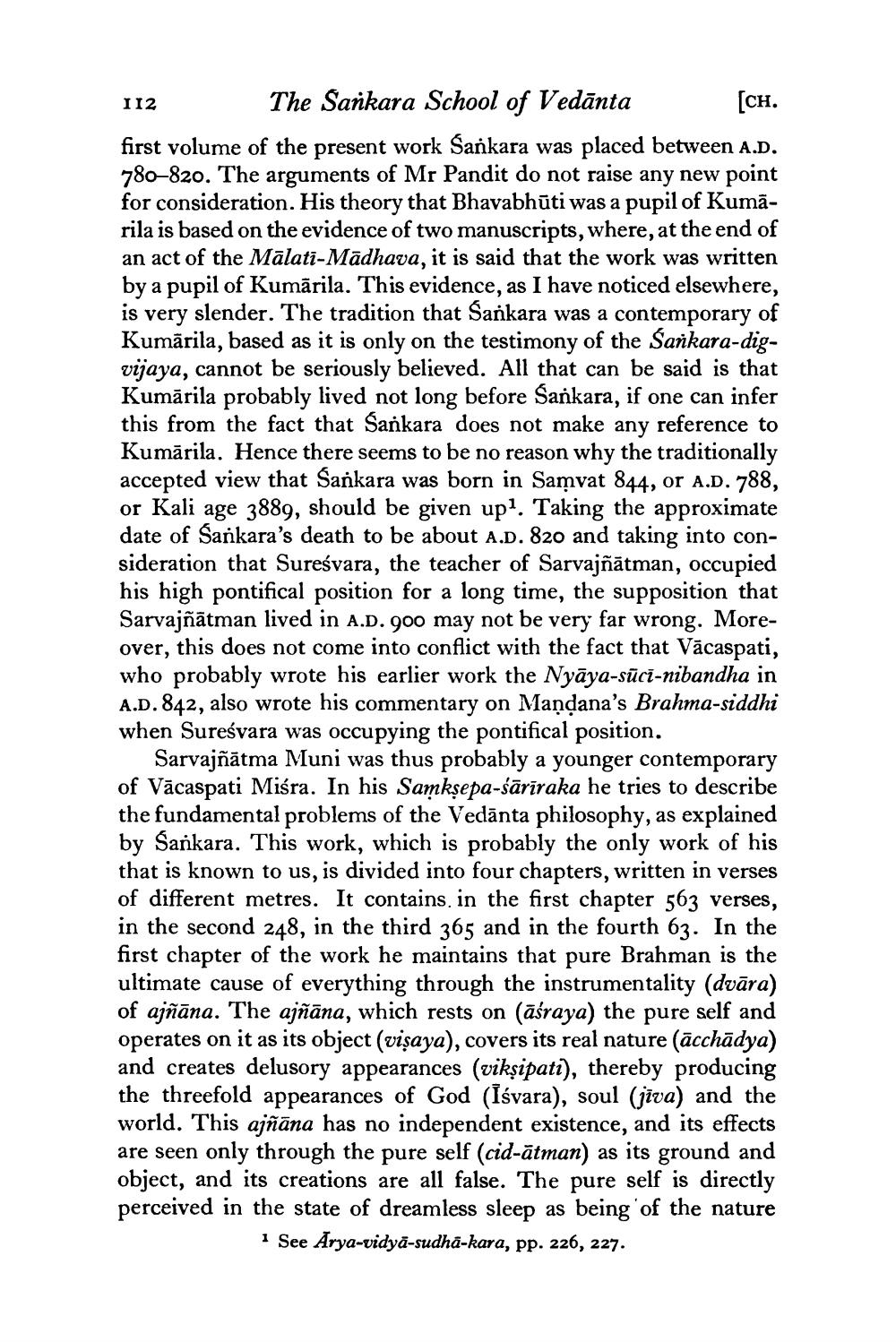________________
The Sankara School of Vedanta
[CH.
very
first volume of the present work Sankara was placed between A.D. 780-820. The arguments of Mr Pandit do not raise any new point for consideration. His theory that Bhavabhūti was a pupil of Kumārila is based on the evidence of two manuscripts, where, at the end of an act of the Malati-Madhava, it is said that the work was written by a pupil of Kumārila. This evidence, as I have noticed elsewhere, is slender. The tradition that Sankara was a contemporary of Kumārila, based as it is only on the testimony of the Sankara-digvijaya, cannot be seriously believed. All that can be said is that Kumārila probably lived not long before Sankara, if one can infer this from the fact that Sankara does not make any reference to Kumārila. Hence there seems to be no reason why the traditionally accepted view that Sankara was born in Samvat 844, or A.D. 788, or Kali age 3889, should be given up1. Taking the approximate date of Sankara's death to be about A.D. 820 and taking into consideration that Suresvara, the teacher of Sarvajñātman, occupied his high pontifical position for a long time, the supposition that Sarvajñātman lived in A.D. 900 may not be very far wrong. Moreover, this does not come into conflict with the fact that Vacaspati, who probably wrote his earlier work the Nyāya-sūcī-nibandha in A.D. 842, also wrote his commentary on Mandana's Brahma-siddhi when Sureśvara was occupying the pontifical position.
Sarvajñātma Muni was thus probably a younger contemporary of Vacaspati Miśra. In his Samkṣepa-śārīraka he tries to describe the fundamental problems of the Vedanta philosophy, as explained by Sankara. This work, which is probably the only work of his that is known to us, is divided into four chapters, written in verses of different metres. It contains. in the first chapter 563 verses, in the second 248, in the third 365 and in the fourth 63. In the first chapter of the work he maintains that pure Brahman is the ultimate cause of everything through the instrumentality (dvāra) of ajñāna. The ajñāna, which rests on (āśraya) the pure self and operates on it as its object (visaya), covers its real nature (acchādya) and creates delusory appearances (vikṣipati), thereby producing the threefold appearances of God (Ïśvara), soul (jiva) and the world. This ajñāna has no independent existence, and its effects are seen only through the pure self (cid-ātman) as its ground and object, and its creations are all false. The pure self is directly perceived in the state of dreamless sleep as being of the nature
1 See Arya-vidya-sudha-kara, pp. 226, 227.
112




